Beyond the glittering lights and bustling energy of the Las Vegas Strip lies a breathtaking expanse of diverse landscapes and fascinating destinations waiting to be explored. For many travelers, the allure of Sin City is undeniable, but after experiencing its unique brand of entertainment, the call of the open road becomes irresistible. If you’re wondering where to go after Las Vegas, you’re in luck.
Its prime location in the American Southwest makes it a perfect launchpad for unforgettable road trips, offering everything from natural wonders and historical sites to vibrant cities and tranquil oases. These journeys provide a stark contrast to the controlled environment of the casinos, inviting you to connect with nature, history, and the unique culture of the region.
Whether you seek towering rock formations, serene lakes, vast deserts, or coastal city vibes, destinations just a few hours’ drive away offer experiences that enrich your understanding of this dynamic part of the world. From engineering marvels to ancient landscapes shaped over millennia, leaving Las Vegas opens up a world of adventure. If you’re already planning your travel to Las Vegas Nevada, knowing these incredible nearby options can help you plan an even richer itinerary.
Explore Natural Wonders Near Las Vegas
The area surrounding Las Vegas is home to some of the most iconic and awe-inspiring natural landscapes in North America. A short drive can transport you from the man-made spectacle of the Strip to places of immense natural beauty and historical significance.
The Hoover Dam: An Engineering Marvel
Just a short drive east of Las Vegas is the Hoover Dam, an astonishing feat of engineering from the 1930s. This colossal structure stands proudly on the Colorado River, a testament to human ingenuity and perseverance during a challenging era. Visiting the dam offers more than just a view of its immense scale; it’s a step back in time to appreciate the effort and vision required to build such a monumental project. Standing at its crest, over 700 feet above the river, provides dizzying perspectives and a deep appreciation for the power of controlled water flow. Guided tours delve into the dam’s history, its construction, and its vital role in providing water and hydroelectric power to the Southwest.
The surrounding Black Canyon area offers dramatic scenery, and simply driving across the Mike O’Callaghan–Pat Tillman Memorial Bridge provides incredible views of the dam and the river below. While the focus is on engineering and history, the vastness of the landscape also reminds you of the powerful natural forces at play.
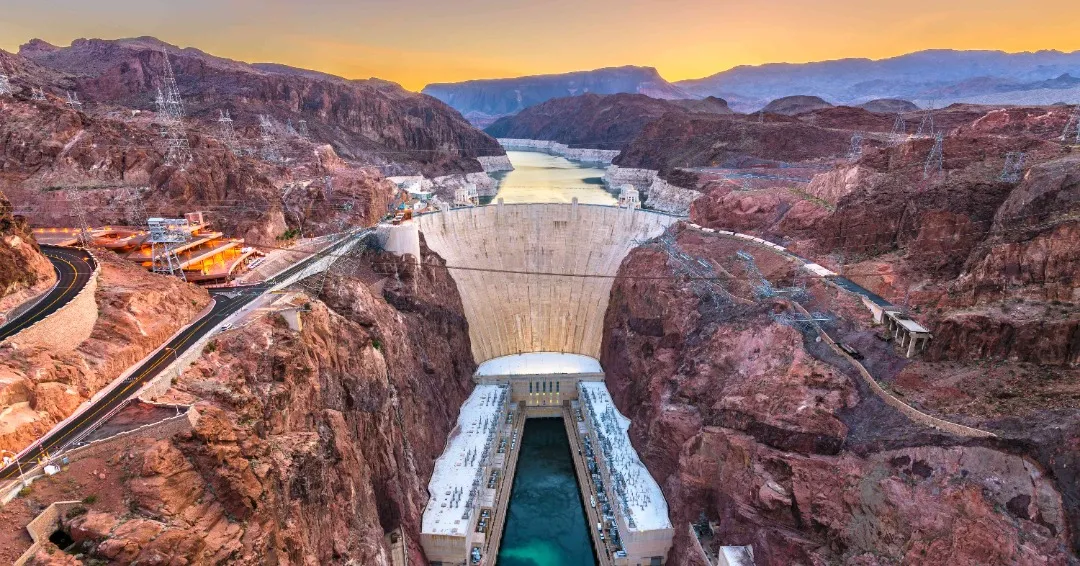 Hoover Dam rising above the Colorado River
Hoover Dam rising above the Colorado River
Lake Mead: A Desert Oasis
Formed by the construction of the Hoover Dam, Lake Mead is the largest reservoir in the United States by volume when full. It’s the closest major body of water to Las Vegas and serves as a vital source for millions. But it’s also a significant recreational area, offering a refreshing contrast to the arid desert climate. Visitors flock here for boating, swimming, kayaking, and jet skiing, finding relief from the heat on its vast surface.
The Lake Mead National Recreation Area encompasses not just the lake but also surrounding mountains, valleys, and canyons, providing opportunities for hiking, fishing, and camping. The varied landscape reflects the geological history of the region, showcasing layers of rock formed over millions of years. While water levels can fluctuate, Lake Mead remains a popular spot for outdoor activities and a chance to experience a different kind of desert environment – one defined by water. The entrance fee covers access for a week, encouraging multiple visits to explore different coves and trails.
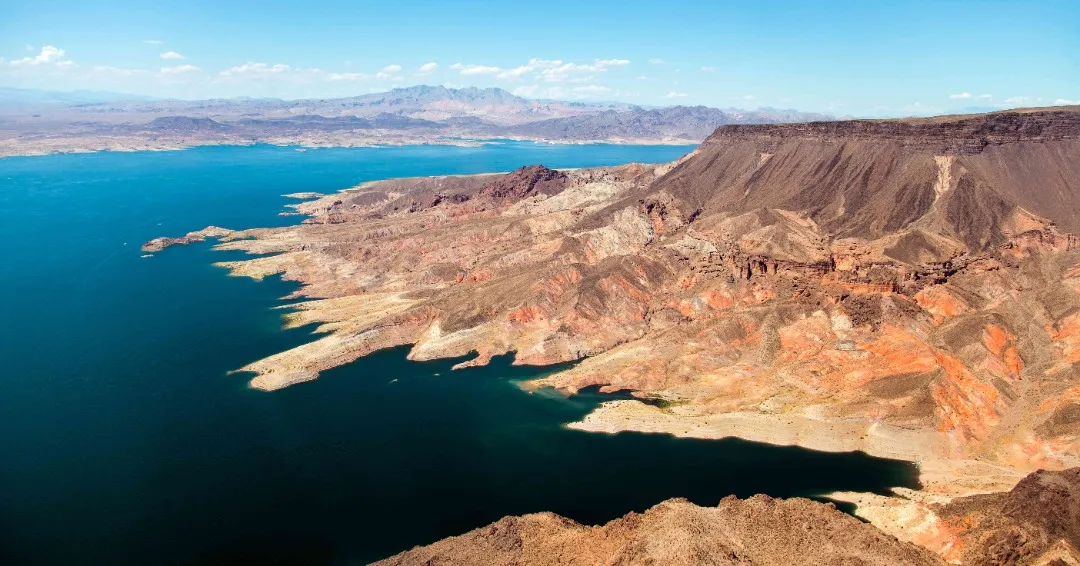 Boats on the blue water of Lake Mead
Boats on the blue water of Lake Mead
Death Valley National Park: Land of Extremes
Prepare for a truly unique experience with a trip to Death Valley National Park in California. Known for holding the record for the highest air temperature ever recorded on Earth (134°F or 56.7°C), its name hints at its challenging conditions. However, enduring the heat (ideally during cooler months) reveals a landscape of startling beauty and incredible diversity. Here, you’ll find vast salt flats stretching seemingly forever at Badwater Basin, the lowest point in North America. Towering sand dunes at Mesquite Flat provide classic desert vistas, while rugged mountains surround the valley, displaying vibrant hues in their rock formations.
Exploring Death Valley allows you to witness the raw power of geological processes and the remarkable resilience of life that adapts to such extremes. Ancient trails hint at the history of indigenous peoples and pioneers who traversed this harsh terrain. Visiting requires preparation – ample water is essential – but the reward is an encounter with one of the planet’s most dramatic and memorable landscapes. If you enjoy exploring unique environments, checking out other places to go in Nevada and beyond might also appeal to you after experiencing Death Valley.
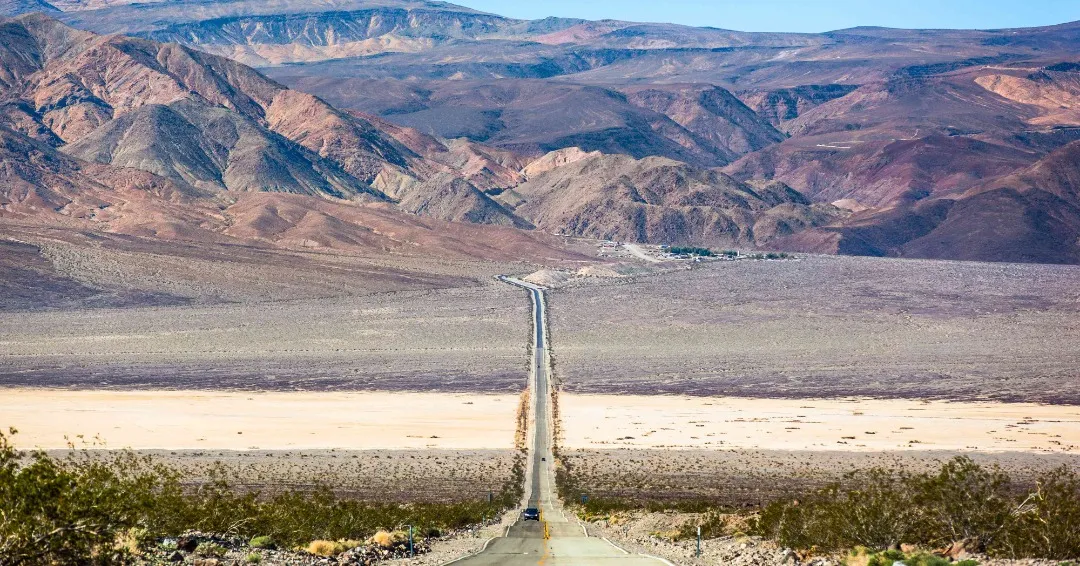 Rolling sand dunes under a clear sky in Death Valley National Park
Rolling sand dunes under a clear sky in Death Valley National Park
Grand Canyon National Park: A World Wonder
Perhaps the most iconic destination reachable from Las Vegas is the Grand Canyon National Park in Arizona. While it’s a longer drive, the experience of standing on the rim of this immense chasm is truly unforgettable and well worth the journey. Carved by the Colorado River over millions of years, the canyon’s layered bands of rock reveal a geological history spanning billions of years. It’s a place that humbles you with its scale and beauty.
The South Rim is the most visited section, offering numerous viewpoints, hiking trails, and visitor services. For those seeking adventure, options range from relatively easy rim walks to challenging hikes into the canyon itself, guided mule rides, and even whitewater rafting trips on the Colorado River far below. If you’re short on time but still want to witness this spectacle, exploring las vegas grand canyon helicopter tours can offer a breathtaking aerial perspective, making it a prime consideration when thinking about where to go after Las Vegas. The views change throughout the day with the light, offering endless photographic opportunities and moments of quiet reflection on the vastness of time and nature.
Where to Go After Las Vegas? Top Road Trips & Destinations
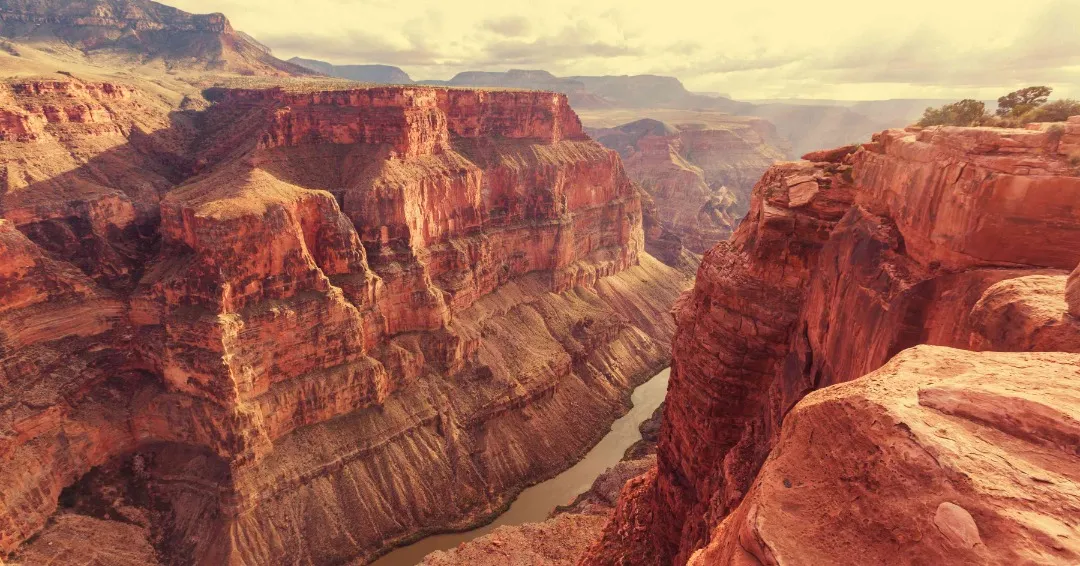 Looking down into the vast layers of the Grand Canyon
Looking down into the vast layers of the Grand Canyon
Zion National Park: Towering Sandstone Cliffs
Located in Utah, Zion National Park is renowned for its stunning sandstone cliffs, which soar upwards in vibrant shades of cream, pink, and red. The Virgin River flows through the canyon, carving narrow, dramatic slot canyons like the famous Narrows. Zion offers a different kind of grandeur than the Grand Canyon, with a focus on verticality and intimate canyon experiences.
Hiking is the primary activity here, with trails ranging from easy riverside strolls suitable for families to challenging climbs like Angels Landing, which offers panoramic views for those brave enough to tackle its chains-assisted sections. The geology of Zion is striking, showcasing cross-bedding patterns that reveal ancient sand dune landscapes now turned to stone. Visiting Zion is an immersion in the power of water and wind sculpting rock, offering breathtaking vistas around every bend. A short detour to the nearby Valley of Fire State Park in Nevada on the way to Zion can add another layer of stunning red rock scenery to your trip.
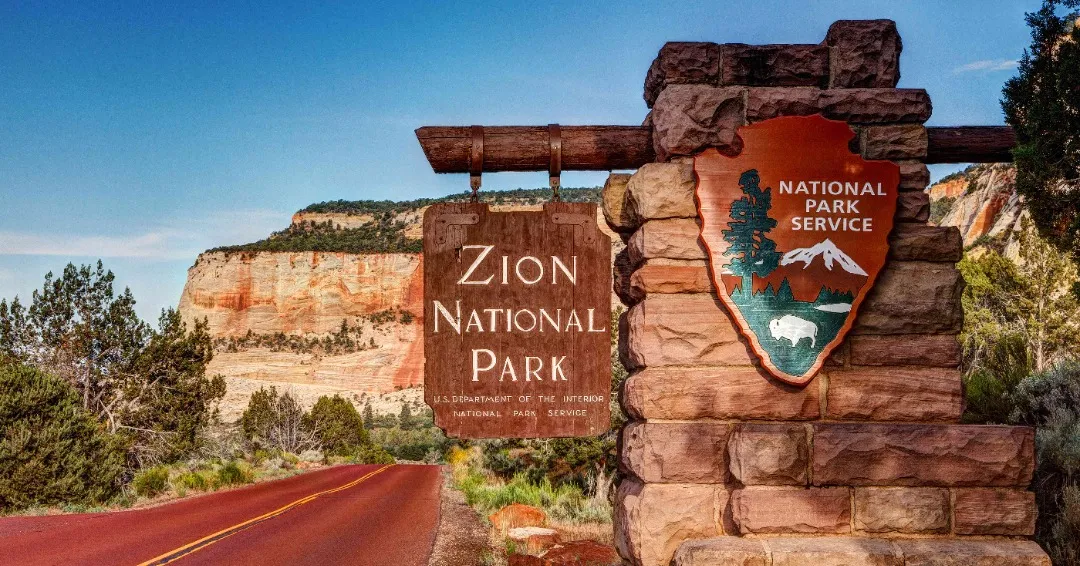 Sunlight illuminating the massive sandstone cliffs in Zion National Park
Sunlight illuminating the massive sandstone cliffs in Zion National Park
Joshua Tree National Park: Desert Iconography
Straddling the Mojave and Colorado Deserts in California, Joshua Tree National Park is named for the unique, spiky trees found there (Yucca brevifolia), which look like something out of a Dr. Seuss book. This park is famous for its distinctive rock formations – giant, jumbled piles of monzogranite boulders that are a magnet for rock climbers.
The landscape here feels surreal and peaceful, especially during the golden hours of sunrise and sunset. Beyond the iconic trees and rocks, the park offers excellent hiking through different desert ecosystems. It’s also a designated International Dark Sky Park, making it an incredible spot for stargazing away from city lights. Camping under the brilliant night sky here is an unforgettable experience. Like Death Valley, visiting Joshua Tree requires planning, including bringing plenty of water, as sources are limited within the park. It’s a place that invites contemplation and appreciation for the subtle beauty and resilience of desert life.
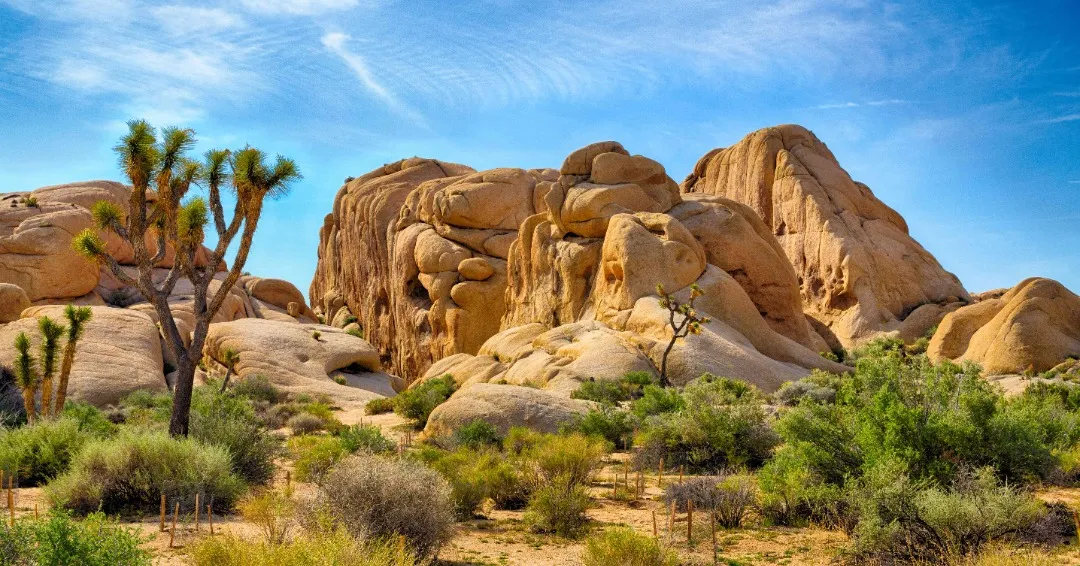 Unique Joshua Trees stand among boulders in Joshua Tree National Park
Unique Joshua Trees stand among boulders in Joshua Tree National Park
Cities and Oases: Contrasting Destinations
Leaving the desert landscapes, you can also find vibrant cities and relaxing oases within a reasonable drive from Las Vegas, offering different kinds of experiences.
Los Angeles, California: The Coastal Metropolis
Heading southwest on Interstate 15 takes you on a direct route to Los Angeles, California. This sprawling metropolis offers a complete change of pace from Las Vegas, trading casinos for coastlines and vast natural landscapes for urban jungles. LA is a hub of culture, entertainment, and diverse communities. Depending on your interests, you could spend time exploring Hollywood’s film history, visiting world-class museums like the Getty Center, relaxing on beaches from Santa Monica to Venice, or exploring diverse neighborhoods with their unique food scenes. If you appreciate variety and a mix of high-energy city life with coastal chill, LA is a great option for where to go after Las Vegas.
The drive itself offers changing scenery as you descend towards the coast. Food lovers will find an endless array of options, from famous food trucks to celebrity chef restaurants. While you might not attend best culinary schools in las vegas on this trip, you can certainly sample some incredible flavors reflecting LA’s global influences. A weekend (or longer) is recommended to even scratch the surface of what this dynamic city offers.
 The skyline of Los Angeles with mountains in the background
The skyline of Los Angeles with mountains in the background
Palm Springs, California: Mid-Century Modern Chic
Just southeast of Los Angeles, nestled in the Coachella Valley at the foot of the San Jacinto Mountains, lies the stylish desert oasis of Palm Springs. Famous for its golf courses, luxurious spas, and distinct mid-century modern architecture, Palm Springs offers a retro-chic vibe focused on relaxation and leisure.
Beyond the resorts and boutiques, the surrounding area provides opportunities for outdoor activities like hiking in the mountains or exploring nearby desert landscapes. However, a key attraction is simply appreciating the design and history embedded in the city’s buildings. Driving through neighborhoods like Vista Las Palmas feels like stepping back into the 1950s and 60s, showcasing clean lines, flat roofs, and seamless indoor-outdoor living spaces. For those interested in design, architecture tours are popular. Palm Springs is a destination that encourages slowing down, soaking up the sun, and enjoying a blend of natural beauty and curated style.
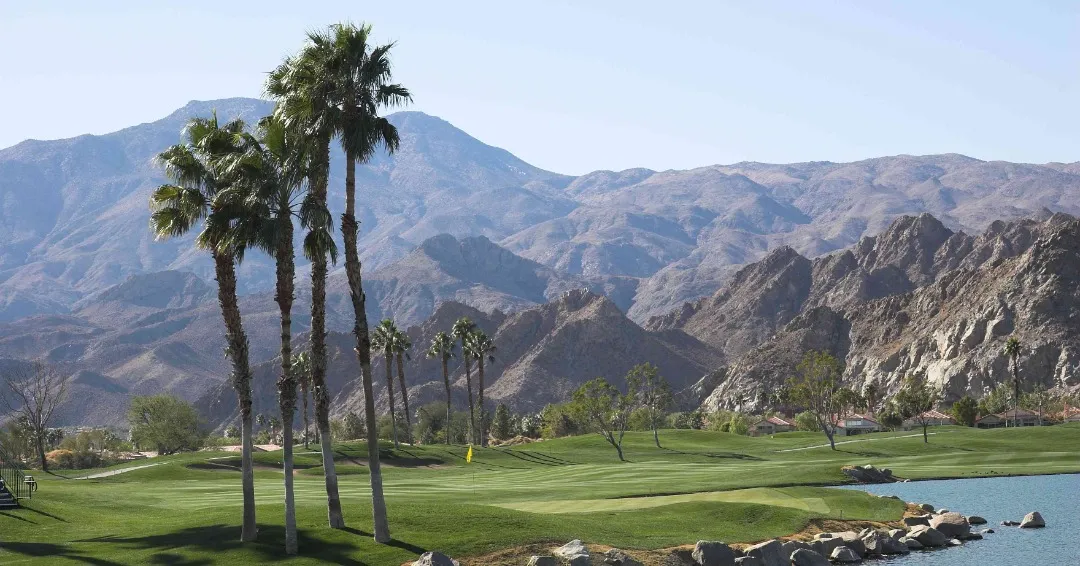 Palm Springs city view with palm trees and mountains
Palm Springs city view with palm trees and mountains
Phoenix, Arizona: Southwest City Life
A longer drive south on US Highway 93 from Las Vegas brings you to Phoenix, Arizona, the state capital and a major metropolitan area in the Sonoran Desert. Phoenix offers a different perspective on desert living, with a focus on outdoor recreation (especially golf and hiking in the surrounding mountains), a growing arts and culture scene, and delicious Southwestern and Mexican-influenced cuisine.
The journey itself passes through interesting desert towns. A notable stop along the way is Kingman, Arizona, which sits on a historic stretch of Route 66. Here, you can visit the Route 66 Museum or explore the Kingman Railroad Museum, nodding to the city’s past as a transportation hub. Phoenix itself boasts attractions like the Desert Botanical Garden, highlighting unique desert flora, and the Heard Museum, dedicated to American Indian art and culture. It’s a city that balances urban amenities with easy access to the natural beauty of the Sonoran Desert.
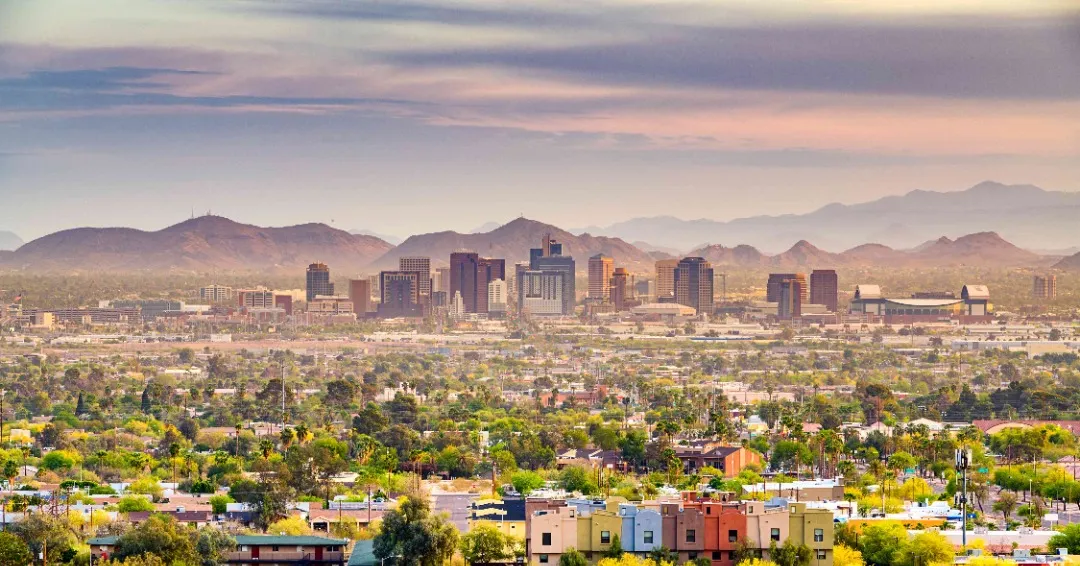 Downtown Phoenix, Arizona skyline at sunset
Downtown Phoenix, Arizona skyline at sunset
Lake Havasu, Arizona: The London Bridge
Situated on the border of Arizona and California, Lake Havasu is another reservoir on the Colorado River, offering beaches and water sports. While its natural setting is appealing with mountain views, Lake Havasu City has a unique claim to fame that adds a surprising historical and cultural element: the London Bridge. Yes, that London Bridge.
The outer granite cladding from the 1830s London Bridge was purchased, dismantled piece by piece, shipped across the Atlantic and through the Panama Canal, trucked to Arizona, and reassembled in Lake Havasu City in the late 1960s and early 70s. It now spans a channel connecting an island to the mainland. This peculiar piece of transplanted British history in the middle of the American desert makes Lake Havasu a truly unique destination, blending recreational lake activities with a curious story of international relocation and reconstruction.
 The historic London Bridge spanning a channel in Lake Havasu City
The historic London Bridge spanning a channel in Lake Havasu City
Sedona, Arizona: Red Rocks and Spirituality
Venturing a bit further into Arizona (often combined with a trip to Phoenix or the Grand Canyon area) is Sedona, famous for its stunning red sandstone formations that glow intensely red, especially at sunrise and sunset. Beyond its undeniable natural beauty, Sedona is also known for its spiritual vortexes and vibrant arts scene, attracting a different kind of traveler.
Hiking trails wind through the iconic red rocks, offering routes for all skill levels, from easy walks to challenging climbs with panoramic views. The town itself is filled with art galleries, boutiques, and wellness centers catering to those seeking a spiritual or artistic experience. The unique energy of the place, coupled with the breathtaking scenery, makes Sedona feel distinctively different and provides a calming contrast to the excitement of Las Vegas. It’s a destination that nourishes the soul and provides endless opportunities for stunning photography and outdoor activity.
Planning Your Road Trip from Las Vegas
Choosing where to go after Las Vegas depends entirely on your interests and how much time you have. For quick day trips or overnight stays, Hoover Dam, Lake Mead, and the closer sections of Death Valley are easily accessible. For national parks like the Grand Canyon, Zion, and Joshua Tree, plan for at least one night nearby to maximize your time and experience different lighting conditions. Cities like Los Angeles, Phoenix, and Palm Springs are best explored over a weekend or longer.
Consider the time of year, as desert temperatures can be extreme in summer. Spring and fall often offer the most pleasant weather for outdoor activities. Be sure to pack essentials like water, snacks, sunscreen, and appropriate clothing and footwear for hiking or exploring. Having a reliable vehicle is key for exploring these diverse landscapes. If you’re planning to enjoy some fun things to do in vegas for couples before hitting the road, these destinations offer romantic and adventurous follow-up options.
Frequently Asked Questions About Leaving Las Vegas
How far are these destinations from Las Vegas?
Distance varies greatly. Hoover Dam and Lake Mead are less than an hour away. Death Valley, Zion, and Joshua Tree are generally 2.5 to 3.5 hours away. Longer trips like Los Angeles, Palm Springs, Phoenix, Sedona, and Lake Havasu range from 4 to 5 hours or more.
What is the best time of year for a road trip from Las Vegas?
Spring (March-May) and Fall (September-November) typically offer the most moderate temperatures, ideal for exploring deserts and national parks. Summer can be extremely hot, especially in Death Valley and southern Arizona. Winter can bring cooler temperatures and potential snow at higher elevations like the Grand Canyon North Rim (which closes seasonally) and Zion, but the South Rim of the Grand Canyon and lower elevation areas remain accessible and offer unique beauty.
Do I need a special vehicle for these trips?
Most of these destinations are accessible via paved roads, so a standard car is usually sufficient. However, if you plan on exploring unpaved backcountry roads (common in places like Death Valley or around national parks), a vehicle with higher clearance or 4WD might be necessary. Always check park conditions before visiting.
Can I combine multiple destinations into one trip?
Absolutely! Many travelers combine trips, for example, visiting the Hoover Dam and Lake Mead on the way to the Grand Canyon, or linking Zion and the Grand Canyon. Planning a route that connects several points of interest is a great way to see more of the Southwest landscape after your stay in Las Vegas.
Beyond the Neon: Your Next Adventure Awaits
Las Vegas provides a vibrant, high-energy experience, but the surrounding region offers a wealth of natural beauty, historical depth, and cultural richness that provides a perfect counterpoint. From the engineering marvel of the Hoover Dam and the serene waters of Lake Mead to the overwhelming scale of the Grand Canyon and the unique landscapes of Death Valley and Zion, the options for exploration are vast and varied.
Add in the urban and oasis retreats of Los Angeles, Palm Springs, Phoenix, Lake Havasu, and the spiritual beauty of Sedona, and you have a multitude of answers to the question of where to go after Las Vegas. Each journey promises unique sights, memorable experiences, and a deeper connection to the diverse tapestry of the American Southwest. So, pack your bags, hit the road, and discover what lies just beyond the city limits.
Image of a thumbnail representing road trips with the text “Where to Go After Las Vegas”
